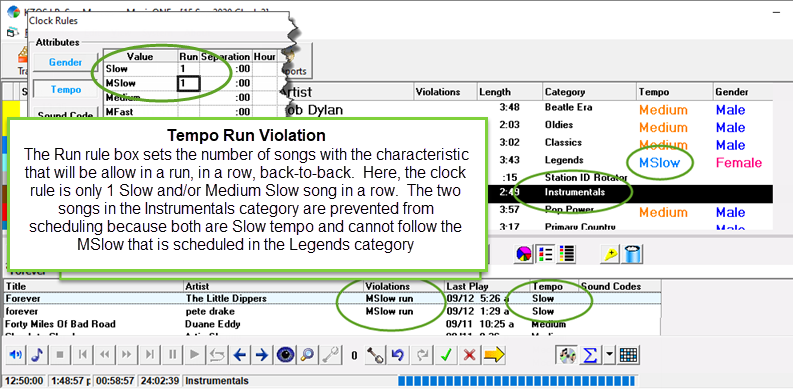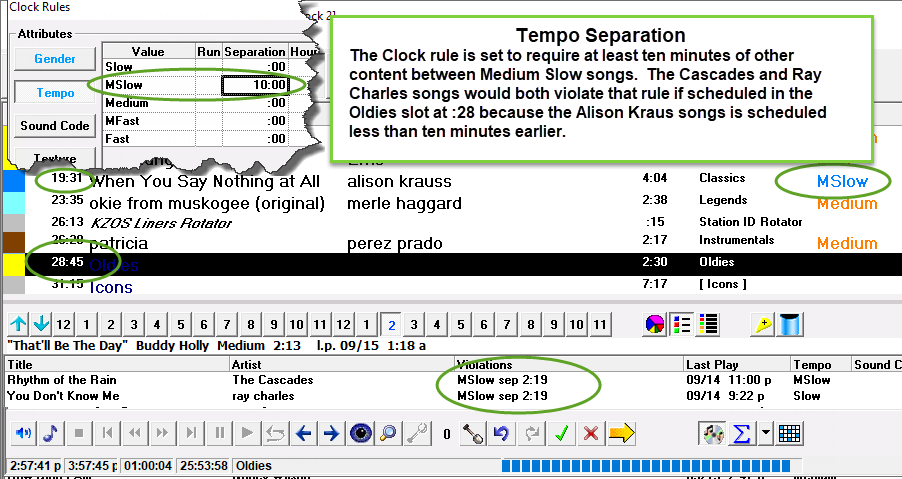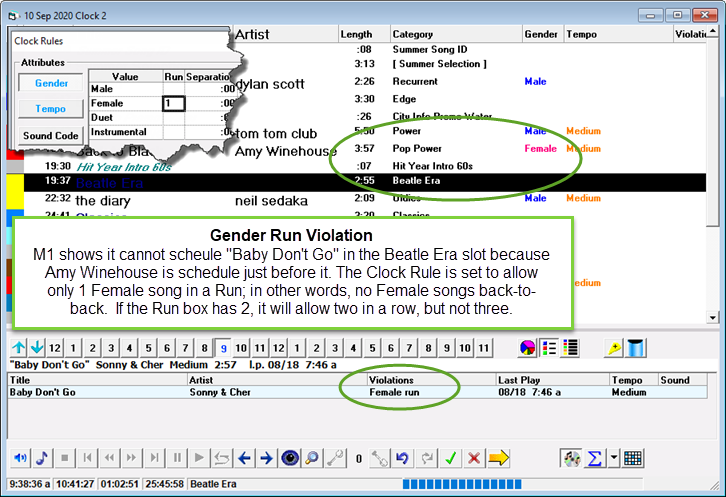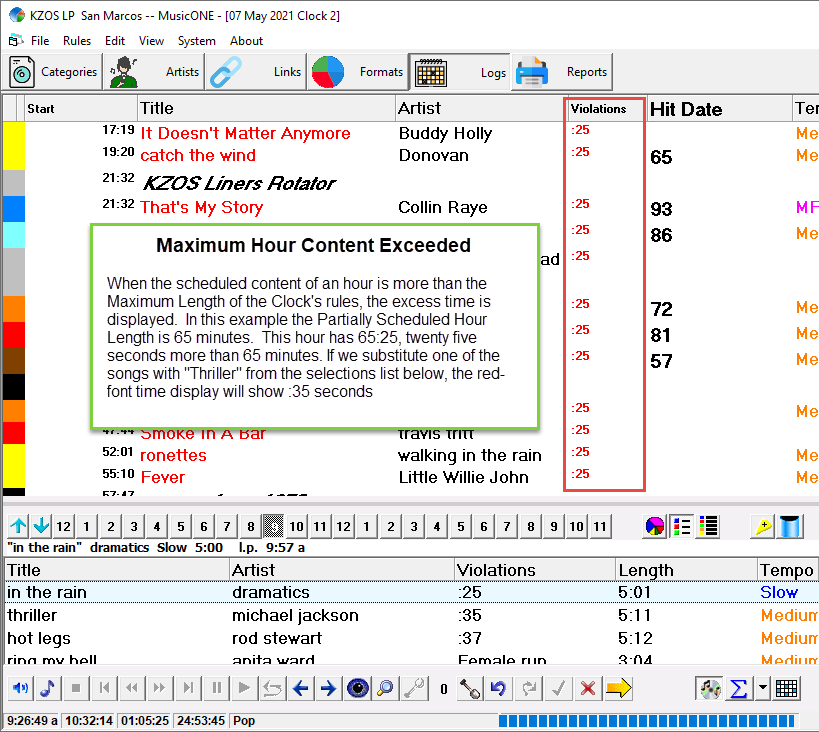MusicONE is unique in its field. It was designed to provide a way for quick edits for rule violation choices to be made as the schedule is being compiled. Steve named it “interactive editing” because all the others were designed to first make a ‘draft’ log which the music director then edited. The M1 way has proved to be a much more efficient way to get the job done. It shouldn’t take more than five minutes a day for a rules-heavy station. For most of us, however, more than six editing ‘stops’ per schedule is getting on the high side, especially when it’s the same rule violation.
For newcomers and converts, it takes a few sessions to get the hang of it, even with all the video watching. The first time your eyes see the Violation displays, you need a little definition as to what the problem is. Here’s a list of the violation notices that are the most frequently encountered below. If you come across any types of violations that you don’t see in the list, send a screen shot of it to Steve at the M1 office so he can add it to the list.
Keep this top of mind: If the same violation comes up over and over, it indicates some conflict in the content of the library or category with the Clock rules that are in place. For example, if your library is 30% slow songs and you are scheduling 14 tracks an hour, a Clock Rule limiting the hour to only 4 Slow songs will immediately clog the pipes with a lot of Slow songs backed-up up with not enough open slots for them to fill. Or, if a Classic Rock station will typically be scheduling seven Rolling Stones songs a day, the Artist Separation for the Stones can’t be set for three hours. Remember, each time a Stones song scheduled, it would create an 6-hour roadblock where no other Stones song could schedule.
Artist Separation
Artist Separation is the most common stumbling point with new MusicONE start-ups. Here is Steve Warren’s article about the topic.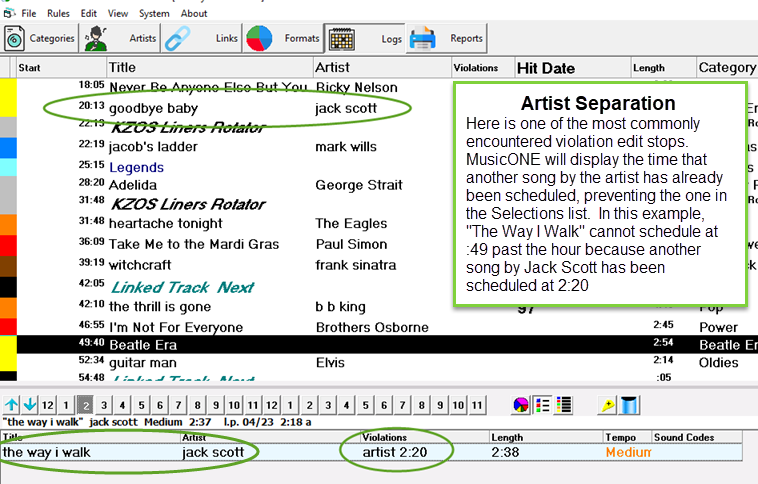
Tempo Run
A “run” is: In a row or back-to-back. The number 2 in the Run box means it is OK for two of those type to schedule back to back, but never more than two.
Tempo Separation
It means there must be at least this many minutes and seconds (mm:ss) before another song of this type can be scheduled. If you use the Run rule, you will not use the Separation rule.
Gender Run
With all Run rules, the number entered means OK for this many in a row and no more. Number 1 in Female means: No female songs back to back.
Maximum Hour Content
Most stations over-schedule most hours by a song or two. So, whenever a new format clock is created, MusicONE sets the allowed time as 65 minutes. Most stations leave it at that, but regularly schedule even more than 65 minutes of content. Because of that, M1 will not “stop” because of that overage, but it will display all of the songs in over-scheduled hours in red font to catch the eye of the editing music director. At your option, the rule can be enabled, then M1 will stop for an edit when an hour may go over the limit.
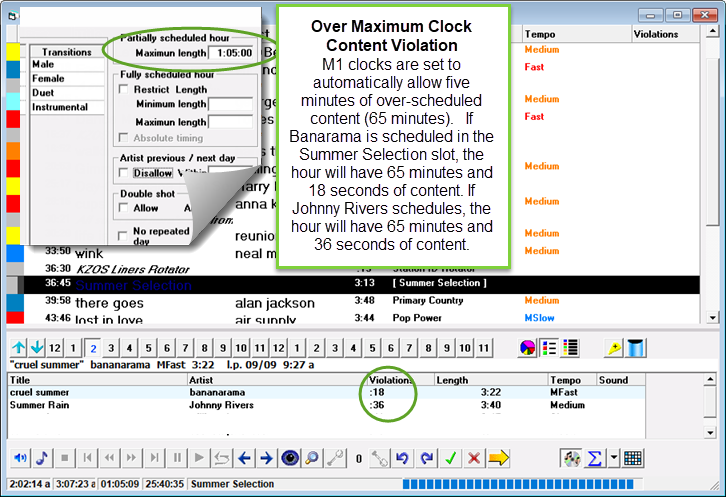
Sound Code Transition
Sound Codes are user-defined characteristics. Most of the songs in most radio libraries do not have nor need Sound Codes. Those that do, usually use only a relative few. Sound Codes can be used to prevent “this” type of song from scheduling next to “that” type of song, however you define your this’s and that’s. 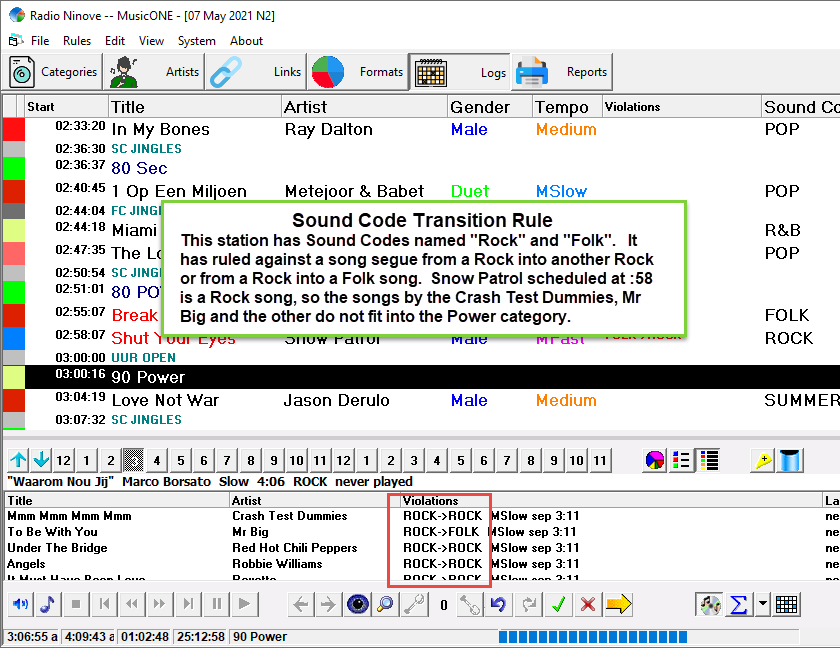
No Choices Showing
